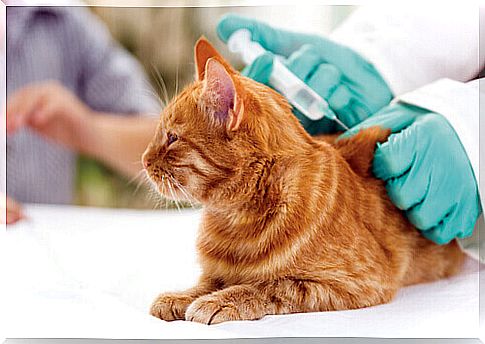All About Anger Or Rabies

Rabies is a disease produced by a virus, with a short incubation time and which, if contagious, can be deadly. Rabies or rabies (water phobia) attacks a wide variety of mammals, including humans, and manifests itself affecting the brain and central nervous system.
The virus that produces rabies, Rhabdoviridae, is present all over the planet, with a higher mortality rate in Africa and Asia, with children and puppies being the most likely to die from this disease.
Streaming
Rabies is transmitted through contact with saliva or other secretions of an infected animal, with the majority being spread by bites or scratches.
Another form of contagion, although infrequent, is when infected saliva reaches an open wound or mucosa.
The virus, once inside the body, travels through the body to reach the brain, where it causes the inflammation that produces the characteristic symptoms of the disease.
Incubation

Incubation of the virus that produces rabies has some variations. For example, it largely depends on the species affected or the part of the body where the virus has entered.
This way, when the entry is from places close to the brain, the virus will have a shorter incubation time.
In animals with sizes similar to those of usual dogs (of medium size), the onset of symptoms usually happens between 3 and 8 weeks after infection.
However, there have been cases reported in which the incubation period of the disease is much longer, reaching up to 6 months.
In animals the size of cats, symptoms manifest within the first 6 weeks, but this is usually very relative, as there are documented cases in which the disease took up to a year to show symptoms after infection, and this phenomenon is much more frequent than in dogs.
For humans, the incubation time is 3 to 6 weeks and hardly has an incubation period longer than this period.
The dog is used to being the main carrier of this disease, as well as being the animal that transmits it the most. That is why the sterilization and vaccination plans for both domestic animals and guide dogs are strengthened.
Symptomatology
The symptoms of anger may not seem alarming at first, but the symptoms will become more and more severe, affecting different bodily functions and the personality of those who suffer from this disease.
Its symptoms are:
- Fever
- Anxiety
- Stress
- nervous attitudes
- excessive salivation
- Aggressiveness
- hyperactivity
- inappetence
- difficulty swallowing
- Paralysis
- Photosensitivity
- wild and disoriented look
- Hydrophobia
- Self-mutilation
- erratic movements
- Voice changes
- Convulsions
Prevention, diagnosis and treatment

Basically, the only way to prevent rabies is through adequate vaccination and little exposure of healthy animals to animals that are infected or suspected of having the disease.
If you have adopted a stray dog, the first thing you do is take him to the veterinarian so that possible diseases are ruled out.
You also shouldn’t leave him with your other animals until you’re absolutely sure he’s healthy.
Also, do not leave food scraps that could attract wild or stray animals, and when you are out on the street, as soon as you see an animal behaving strangely, it is best to inform the person responsible immediately.
The only accurate diagnosis to determine rabies is made by performing a brain tissue analysis. However, this implies that the animal must be dead in order to be determined.
Rabies is diagnosed through the study of symptoms, although they are trying to develop techniques to detect this disease at the earliest stages.
There is no cure for rabies, hence the importance of prevention, because when an animal is determined to suffer from rabies, its fate is death.









